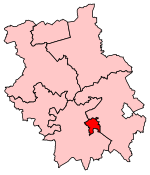Anglia Ruskin University

Anglia Ruskin University (ARU) is a public university in East Anglia, United Kingdom. Its origins are in the Cambridge School of Art, founded by William John Beamont, a Fellow of Trinity College at University of Cambridge, in 1858. It became a university in 1992, and was renamed after John Ruskin, the Oxford University professor and author, in 2005. Ruskin gave the inauguration speech of the Cambridge School of Art in 1858. It is one of the "post-1992 universities". The motto of the university is in Latin Excellentia per societatem, in English Excellence through partnership.In 2022, Anglia Ruskin had 35,195 students. ARU has five campuses across the south-eastern portion of the United Kingdom.There are four faculties of study at the university, namely: Faculty of Business and Law Faculty of Arts, Humanities & Social Sciences Faculty of Health, Education, Medicine & Social Care Faculty of Science & Engineering.
Excerpt from the Wikipedia article Anglia Ruskin University (License: CC BY-SA 3.0, Authors, Images).Anglia Ruskin University
East Road, Cambridge Petersfield
Geographical coordinates (GPS) Address External links Nearby Places Show on map
Geographical coordinates (GPS)
| Latitude | Longitude |
|---|---|
| N 52.203083333333 ° | E 0.13369444444444 ° |
Address
Anglia Ruskin University (Cambridge Campus)
East Road
CB1 1PT Cambridge, Petersfield
England, United Kingdom
Open on Google Maps









